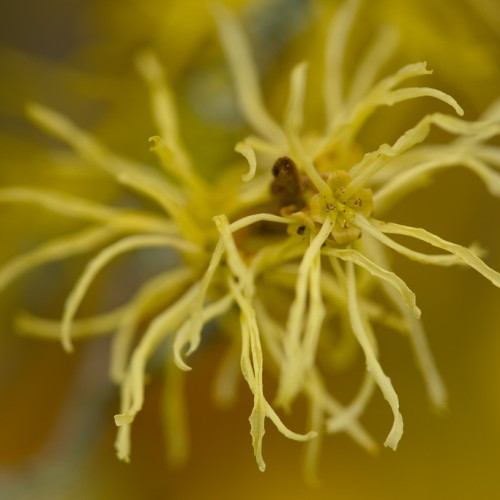
witch hazel
Hamamelis intermedia 'Bernstein'
Cycle:
Perennial
Watering:
Average
Hardiness Zone:
5 - 8
Flowers:
Flowers
Sun:
Full sun,part shade
Leaf:
Yes
Growth Rate:
Low
Maintenance:
Low
Drought Tolerant:
Yes
Care Level:
Medium
watering
Witch hazel should be watered every few days during the growing season from spring to autumn, allowing the soil to dry to a depth of about an inch before watering. During the winter months, water your witch hazel lightly once or twice per month when there is no rainfall. As with all plants, be careful not to overwater witch hazel, as this can cause root rot. Witch hazel prefers moist but well-drained soil, so it is important to monitor the soil moisture to ensure proper hydration.
sunlight
Witch hazel (Hamamelis intermedia 'Bernstein') requires 4 to 5 hours of full sunlight a day to thrive. It prefers early morning or late afternoon sun, as direct midday sunlight can scorch the leaves due to its thin cuticle. This plant species does not do well in shade and does not do well when exposed to long periods of direct sunlight. It should be kept away from southern facing windows, as strong, unshaded afternoon sun is too much for it. Witch hazel will do best when planted under the shade of a large, deciduous tree or on the north side of a building where there is dappled sunlight throughout the day.
pruning
Witch hazel (Hamamelis intermedia 'Bernstein') is a large, shrubby deciduous plant, typically growing up to 8 feet tall and wide. Pruning is necessary to maintain the desired size and shape of the plant. For best results, prune just after the blooming period in late winter or early spring. Aim to selectively prune the shrub to maintain the desired size and shape of the plant. Cut branches back to just above a healthy bud or side branch. Avoid cutting too close to the main stem, as this can promote disease. Remove any twiggy branches and reduce the overall size of the shrub by up to 30 percent to stimulate new growth and encourage more blooms in the future. When pruning Witch Hazel, be sure to use sharp, sanitized tools in order to minimize the potential spread of disease. Take care to avoid cutting into older wood (older than 3 years). Don’t forget to clean your pruning shears after each use to prevent the spread of disease from plant to plant.
